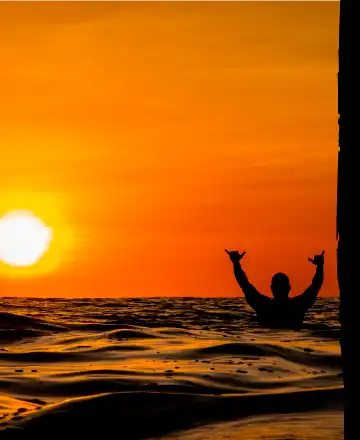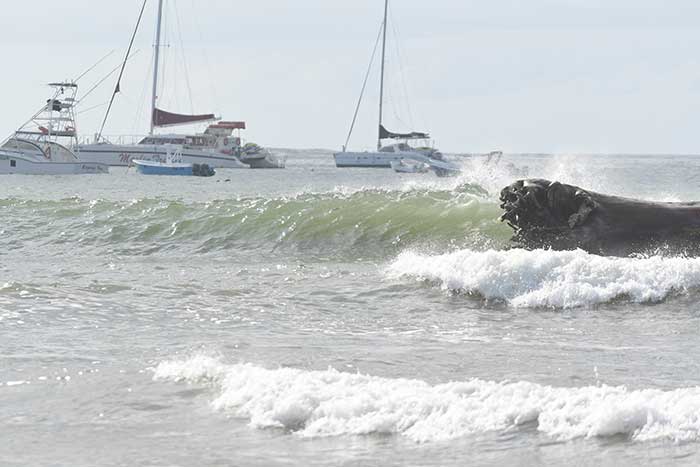
Henry's Right - Playa Tamarindo
Wave Quality: Average (5.5 / 10)
Ideal Swell Direction: NW (280° – 305°)
Ideal Wave Height: Chest high – slightly overhead
Best Wind Direction: Light offshore
Best Tide: High
Required Experience: Advanced.
Best Board: Soft-top, longboard, funboard, fish, shortboard
Bottom: Rock / reef / sand
Crowd: Light
Wave Power: (6.5 / 10)
Best time of the year: December – March
Henry's Right - Playa Tamarindo
Location – Henry’s Right is located in the center of Tamarindo, approximately 100 meters south of Henry’s Left and 500 meters north of the Capitán Suizo surf break.
Henry’s Right breaks just south of the Tamarindo Diria Hotel and just north of Nogui’s Restaurant.
Wave Type / Quality – Right-hand reefbreak (5.5 / 10) Average
Henry’s right sits on a lava thumb reef to the south of Pico Grande / Pico Pequeño. The reef is triangular shaped and there is actually a left hander on the other side (see Henry’s left). The right is a quick hollow takeoff over rocks and then flattens out as the wave moves away from the reef. As the wave gets closer to the beach, there is one last smackable section before finishing on the beach.
Ideal Swell Direction – NW (280° – 305°)
As we move even further south along Playa Tamarindo, the SW swell window almost closes off completely and NW swells (280° – 305°) are the only events that bring worthwhile surf to this spot. Plus, the NW angle gives the wave better shape as it is a right hander and peels in the same direction.
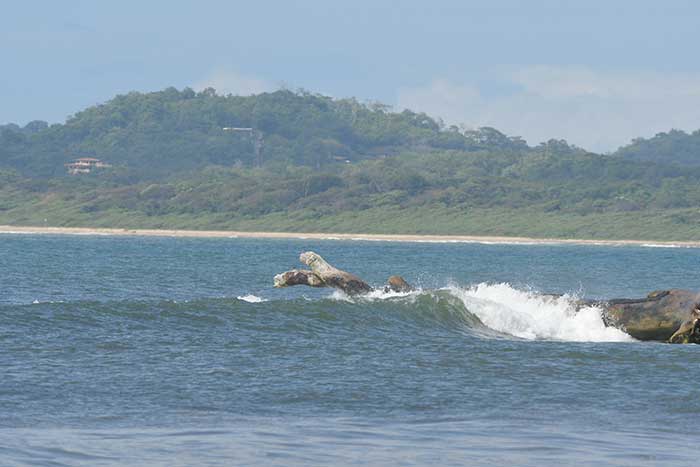
Ideal Wave Height – Chest – slightly overhead
Henry’s right will start working at about chest high. Under chest high, the wave breaks right on top of the rocks and can be dangerous and not worth the effort. The wave can actually handle decent size as there is a deep channel to the south side of the rock/ reef. A head high wave will offer a slabbing barrel on the take off and then a flat section for a cutback, and then an final close-out end section.
Best Wind Direction – Light offshore
Best wind is light – moderate offshore which can range from NNE to NE to ENE. Tamarindo actually has a huge advantage over many other spots to the south because the wind will stay offshore longer. Since Tamarindo is located closer to Lake Nicaragua, the wind will stay offshore here all day while many spots to the south turn onshore around 10am. During the dry season (Dec – April) the offshore winds can be quite strong but the waves generally remain groomed.
Rubber? – Yes (December – April)
Bring some rubber especially if the winds have been blowing offshore for several days. Although rare, water temps can drop down to about 63°F. This is a phenomenon called upwelling. Normally, water temps hover in the 75° – 80°F range. Upwelling really only happens a few times during the dry season. A wetsuit top generally comes in handy for dawn patrol sessions year round.
Best time to score? – December – March
December – March is when we receive our biggest NW swells and this unique angle (280° – 300°) is what will light up Henry’s Right. The swell needs to be quite impressive as well with high periods and sizable deepwater energy. Henry’s right will be surfable maybe 10-20 days a year.
Best Tide – High
High tide is ideal at Henry’s Right. The rocks need to be mostly covered so you don’t drag your fins on the shallow take offs. There are a few boil rocks at the mid point of the wave that the high tide will cover up and keep the wave decently walled up though the deeper sections.
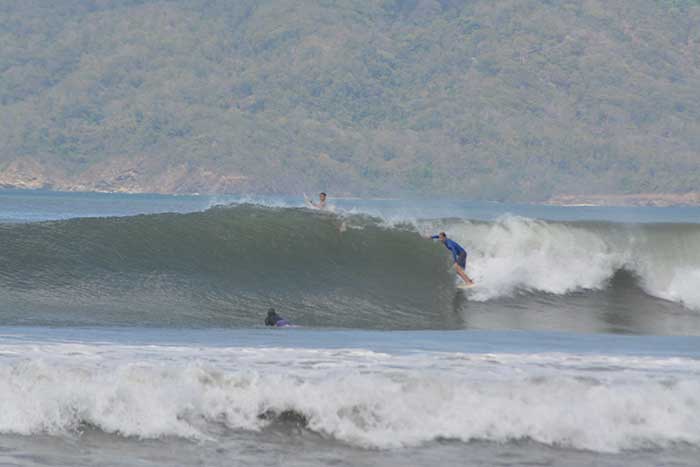
Required Experience – Advanced
Since Henry’s right breaks over a rocky bottom, only advanced surfers should surf here. The take off zone is pretty small and over shallow rocks so surfers here must be confident and strong paddlers. If you hesitate on the drop, you may get washed into the rocks.
Best Board – Soft-top, longboard, funboard , fish, shortboard
Any type of board will work here. Longboarders may have the advantage because they can catch the wave early and avoid the slabbing take-off section over the rocks. Experienced shortboarders will enjoy the power the wave offers since it breaks over a reef. Whatever board you ride, just make sure you can make the steep drop.
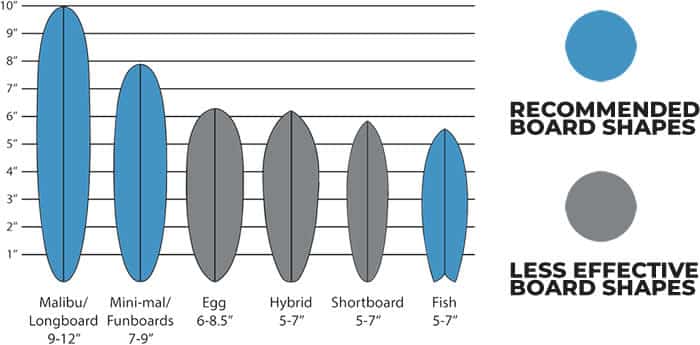
What’s On The Bottom? Rock / reef / sand
The take off is directly on top of shallow rocks. As the wave approaches the shoreline, there is more sand with scattered rocks. Always use precaution when dismounting at the end of your wave.
What’s The Crowd Like? – Light
Since this is one of the more fickle spots in Tamarindo, it commonly gets overlooked. When this wave is working, all the other waves in Tamarindo will be working as well so not too many people think to paddle out here. It is great for a novelty session or to escape the crowd.
How Powerful Is The Wave? (6.5 / 10)
When the wave is working, there is enough power to do vertical turns and roundhouse cutbacks. The initial take off is actually quite powerful as it boils up over rocks and there are quick barrels for the kamikazes.
Perfecto Meter – (6.5 / 10) (1 = Lake Michigan wind chop / 10= Kelly Slater Surf Ranch)
On an ideal day with the perfect swell angle, offshore winds, and decent size, the wave offers 150 meter long right handers which starts with a slabbing barrel and then flattens out into a deep section mid way through. The inside offers one more speed section which generally closes out right on the beach.
Spaghetti Arm Index – (3 / 10)
There is a channel on the south side of the wave so you can catch your wave and paddle back out many times without duck diving. The wave breaks about 100 meters off the beach
Hazards – Reef bottom
How Do I Get There?
From the Tamarindo Beach Break you can walk south to Henry’s Right in about 7 minutes. It is the second lava rock outcropping you will encounter south of the Tamarindo estuary.
Download the Trip Guide
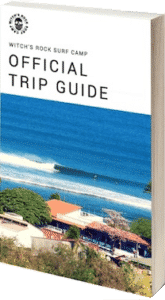
- See why guests return year after year
- Review all of our surf packages
- Learn what a typical week at surf camp looks like
- How to get here, what to pack, when to travel, and more…

